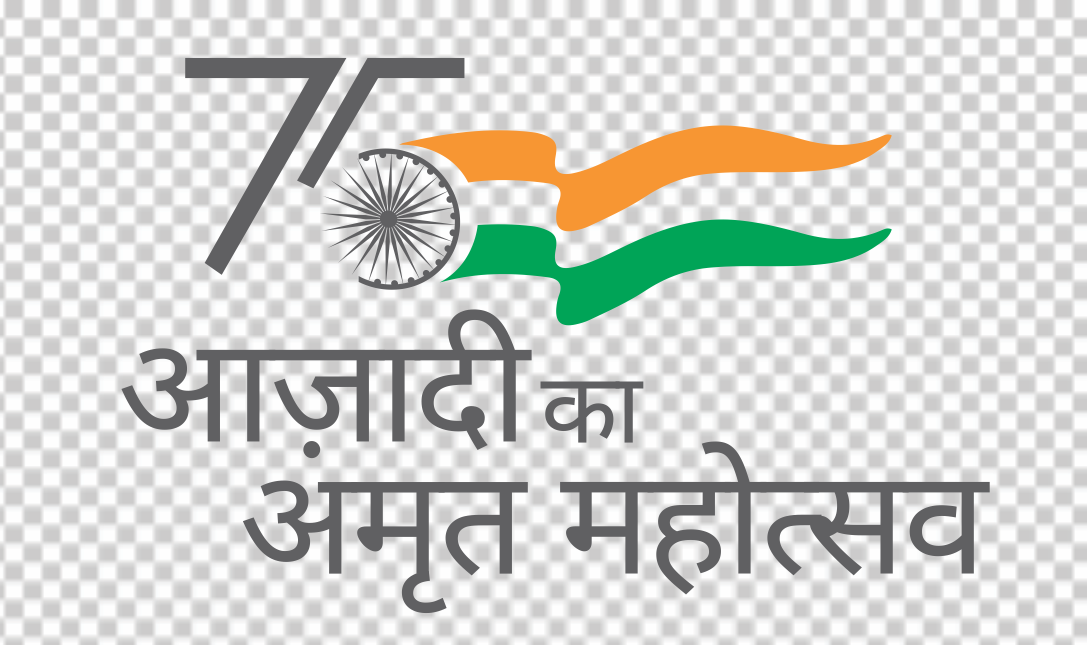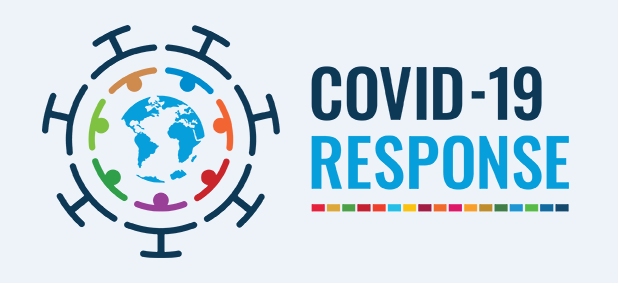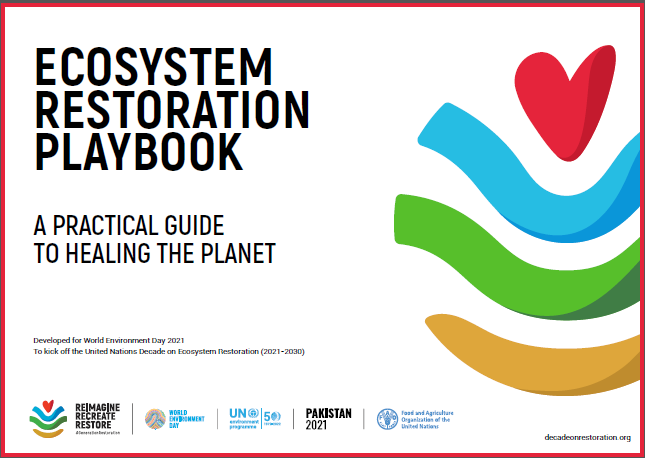Ecosystem Restoration : Focus
on Resetting Our Relation with Nature
Ecosystem Restoration : Focus
on Resetting Our Relation with Nature

Dr Vivek Saxsena, IFS
India Country Representative, IUCN
IISD's invited Distinguished Guest Blog
All over the world, ecosystems face massive threats. Forests are being cleared; rivers and lakes being polluted;
coasts and oceans degraded and overfished; wetlands and peatlands drained; mountain soils eroded; and farmlands
and grasslands overexploited. Ecosystem loss is depriving the world of carbon sinks at a time humanity can least
afford it. There has never been a more urgent need to restore damaged ecosystems than now. Unless we change our ways
and protect and restore our ecosystems, we will not only destroy the landscapes we love, we will undermine the foundations
of our own well-being and leave a degraded, inhospitable planet to future generations. Restoration of ecosystem is fundamental
to achieving the UN Sustainable Development Goals (SDGs), mainly those on climate change, poverty eradication, food security, water and
biodiversity conservation.
Find an IUCN YouTube Video on the right hand side attached
on What is ecosystem restoration?: A Science-based Outlook;
which brings out the following messages:
-
Effective restoration action needs to identify how, when and to whom the benefits of restoration accrue
-
Key enabling conditions tip the balance toward restoration
- For effective ecosystem restoration, planning must be participatory, inclusive and balance priorities and
trade-offs generated by the specific stakeholder needs
- To leverage increased finance it is necessary to expand the focus from solely on financial returns to
consider financial, environmental and social benefits in combination.
- Monitoring and adaptive management are keys to effective and long-term restoration
The United Nations General Assembly declared 2021-2030 as the UN Decade on Ecosystem Restoration, which
aims to massively scale up the restoration of degraded and destroyed ecosystems as a proven measure to fight
the climate crisis and enhance food security, water supply and biodiversity.
The Decade is designed to achieve
existing targets defined by the UN Sustainable Development Goals, the UN Convention on Biological Diversity,
the UN Convention to Combat Desertification and other global frameworks. It will also act as an accelerator
to ongoing restoration efforts, such as the Bonn Challenge, which aims to restore 350 million hectares of
degraded landscapes by 2030. Restoring 350 million hectares of degraded landscapes by 2030 presents a boost
to rural economies worth US$9 trillion in ecosystem services and contributes to alleviate poverty.
Ecosystem restoration is also the theme for the World Environment Day, 2021. As the innumerable benefits
that natural ecosystems offer in combating climate change, enhancing food security, water supply and biodiversity
become evident, it is important to increase our interest in investing in Nature Based Solutions (NBS) for ecosystem restoration.
Ecosystem restoration cannot be an environmental issue anymore. System-wide transformation requires embracing restoration as
part of the social agenda, calling for collective action of the people. Pledges to action require institutional transformation
at a national scale across political and regulatory levels, so that restoration becomes a national aspiration that supports social change.
This is closely connected to the current and future leaders, who in order to spearhead change should be guided by a positive attachment and
relationship with their communities and nature, seeing the potential of healthy ecosystems to be a harbour of human life, present and future.
People with a growing awareness on this also have the responsibility of engaging with leaders and decision makers to translate a vision of living
in harmony with nature in a way that seems relatable, that triggers action.
For this, sufficient finance and investment need to be catalysed. As of now, the investments needed to meet the restoration targets
exceed available public resources, with various estimates pointing out the shortfall in global funding for nature - one recent
estimate places the funding gap for restoration and conservation as high as US$824 billion per year (IUCN).
If the world is to meet the Climate change, Biodiversity, and Land Degradation targets,
it needs to close a USD 8.1 trillion financing or a gap of 4.1 trillion in Nature Investment by 2050.
The current investments in Nature-based solutions amount to USD 133 billion - about 0.10 percent of Global GDP, most of which comes from public sources,
Which needs to be tripled in nature based solutions by 2050, The State Of Finance for Nature , published by UNEP reports.
Thus, we need a combination of public and private capital flows for restoration to scale.
A wide variety of public and private sustainable financial instruments are available that could support
ecosystem restoration, including financing instruments that supply capital (equity and debt instruments including green bonds)
and risk mitigation instruments (insurance, for instance). However, sustainable finance continues to be a niche offering within
large financial institutions - so the scale of the use of sustainable finance within large institutions needs to grow.
A few ways to do so are the scaling up of the use of the Environment and Social Risk Management (ESRM) tools across
industries so these tools are fully integrated into investment decision-making. There is also a necessary alignment to
occur between the perceived incentives for private sector investment with ecosystem restoration - this includes the creation of smart government incentives as
well as the role that citizens can plan to influence companies actions through consumers' decisions.
Ms Priya Shyamsundar, Lead Economist, The Nature Conservancy says in an IUCN Webinar on -
UN Decade on Ecosystem Restoration that Restoration
can increase the availability of goods and services, for instance, timber, fish, tree products, etc.
If we can create the systems so that these goods are less obtained from degraded forests and increasingly obtained
from managed, restored forests and sustainable supply chains then the supply chains themselves will pay for the
restoration and can generate jobs and indirect economic benefits. On the other hand, there are services that restoration
offers which are within the public realm, for instance, disaster risk reduction, flood mitigation, etc, that the public
sector needs to pay for. Other ecosystem services like carbon for instance are in rising demand, where you can bring in
the private sector's finance. This of course should not reduce the biodiversity potential of restoration. There is no silver
bullet for restoration financing although there are several options that need to be expanded and grow as enabling conditions
and institutional systems are put in place.
This incredible challenge of restoring the ecosystems can only be met if everyone including Member States, local governments,
partners from the private sector, academia, civil society and Farmers come together to find viable, lasting solutions.
It won't be quick or easy, and it will take deep changes to everything from the way we measure economic progress to how we grow
food and what we eat. But the beauty of ecosystem restoration is that it can happen at any scale and everyone has a role to play.
Restoring damaged ecosystems is an efficient and cost-effective way people can work with nature to address the most pressing challenges humanity
is facing today, i.e. the Coronavirus disease (COVID-19) global pandemic, whose emergence has shown just how disastrous the consequences of
ecosystem loss can be.
It is now time to rebuild what we have lost. Restoring our ecosystems intrinsically connects us to a chance at a healthier future.
______________________________________________
Dr Vivek Saxsena, IFS is the India Country Representative, International Union for Conservation of Nature (IUCN). He was IISD's Chief Guest in an Instagram Live Interactive Session, on Occasion of World Environment Day, 2021.
This is an IISD's Invited Guest Blog, under Distinguished Personality Category.
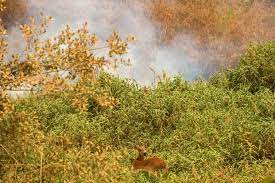
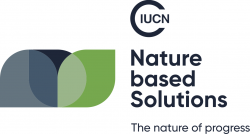
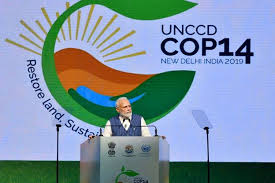
India Will Restore 26 Million Hectares of Degraded Land by 2030
Ecosystem Restoration Playbook
State of Finance for Nature - UNEP

